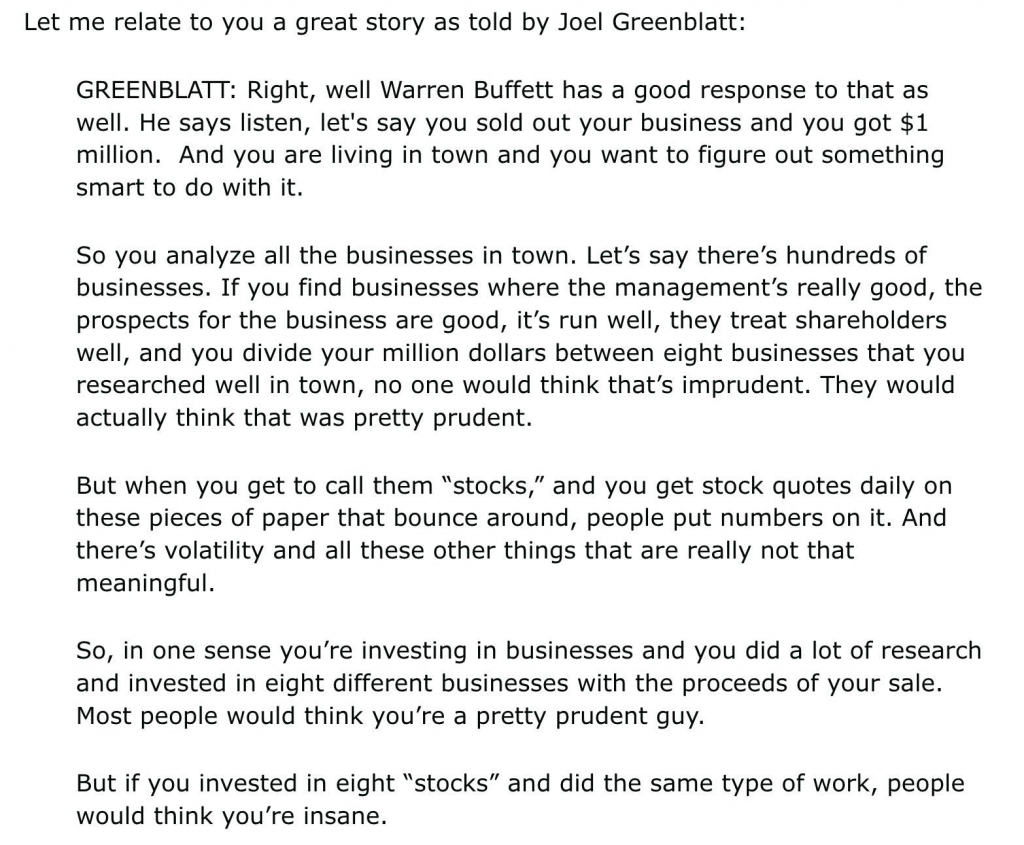Today’s gem is an anecdote from Joel Greenblatt on how Warren Buffett approaches portfolio concentration:

What I find interesting is the wide-ranging definitions of “concentrated portfolio”. Some investors might consider 25 stocks to be concentrated. Others would say only 5 stocks or less should be considered concentrated.
It’s really arbitrary, and dependent on each investor’s style, but some questions you need to ask yourself are:
- How many businesses could I really be an expert in?
- How much time/resources do I have to allocate to each business?
- How related are the businesses? Maybe 4 of the businesses should really only count as 1, since they’re all in a similar industry.
For each business you own, you should know the key value drivers and the key risks well. You want to be diversified enough that you avoid the risk of ruin, (a single/few factor(s) wiping most/all of your equity). But you don’t want to be too diversified that you end up generating average returns (why not just buy an index fund in this case?). It’s a bit of a balancing act.
For me, the number is probably somewhere between 6-10 unique businesses and theses (roughly where I am today). This includes both my stock portfolio and my portfolio of privately held businesses.
As per the anecdote above: it shouldn’t matter whether a business is private or public – a great investment is a great investment. I view investing in stocks and private companies through the same lens. I develop a thesis, understand the key value drivers, assess the key risks and conclude whether it’s a good investment or not.
I am always assessing new opportunities but keep a high bar for any new additions to my portfolio. I compare new investment opportunities against increasing allocations to my existing holdings. The last point I’ll make about portfolio concentration is, I try to keep my portfolio balanced between liquid and illiquid investments. So a portfolio of 10 unique businesses, I’d aim to have 5 privately held and 5 publicly traded. Adequately concentrated, but ample liquidity.




